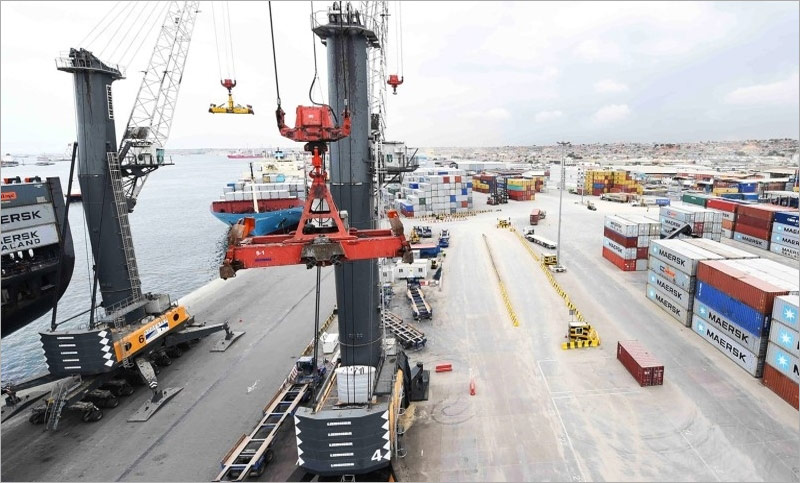Angola readies $445 million to build 21 logistics hubs
December, 02nd 2021

The Angolan government plans to invest over US$445.5 million (392.3 million euros) to build 21 logistics centres, by 2038, in order to minimise the challenges of goods transport, which is still heavily dependent on road transport.
The information was published today in Soyo, Zaire province, by the Minister for Transport, Ricardo de Abreu, at the launch of the international public tender for the concession, construction, operation and commercial management of the Soyo and Luvo Logistics Platforms, in Zaire.
Abreu said that all the platforms to be built by 2038 will have different characteristics that will complement each other.
"This act symbolises that we are taking another concrete step towards promoting the diversification of the Angolan economy, by way of stimulating increased production in other sectors and reducing dependence on oil, and it is therefore fundamental to establish an optimised logistics network, integrated by the maritime, land, rail and air sectors," he said.
According to the minister, the network of logistics platforms will be an important element in the plan to diversify the national economy, and depending on the province where they are installed they will facilitate the storage, conservation and flow of production from productive, rural and fishing areas, as well as from agri-industrial hubs.
Angola is ranked 162 out of 163 countries in the World Bank's Logistics Index, the minister said, noting that the institution estimated that in 2017 transport and logistics costs in Angola were 16.7 percent in relation to the Gross Domestic Product.
"This is twice as much as in the most developed economies," he noted.
By 2022, Angola plans to put into operation six logistics platforms, which are expected to boost the great economic potential of its regions and respond to the growing demand for goods and services by citizens and companies.
"With the SADC [Southern African Development Community] region in its sights, the National Network of Logistics Platforms will also be a determining element for solidifying Angola's geostrategic position as a reference hub for the entry and exit of goods in southern and central Africa," he said.
In his turn, Economy Minister, Mário Caetano João, said that this network of logistics platforms would help the dynamics of the regional integration process in southern and central Africa, which could be fed by Angolan products.
"We are talking about two markets with over 500 million inhabitants, which is a sufficiently vast market and we can only ensure that these logistics platforms effectively serve the country in the best way," he noted.
Caetano João noted that without these logistics platforms we have already seen a very interesting dynamic in exports, with the main markets at the moment being the Republic of Congo, the Democratic Republic of Congo (DRCongo) and Cameroon.
"We are seeing a diversification of the destination of our goods, last year it was mainly the Democratic Republic of Congo, border countries, today we are seeing that the Republic of Congo is in first place, secondly the Democratic Republic of Congo and thirdly Cameroon, so we are seeing that our companies are exploring neighbouring countries, where the entry of our goods is less demanding, for less sophisticated markets," he said.
According to the Economy Minister, the product leading exports are cement, alcoholic beverages, soft drinks and packaging.
"Those are the first four that have been gaining ground here in the region and we have been monitoring and seeing how we can eliminate non-tariff barriers," he added.
The holder of the Economy portfolio said there is also an effort to expand production to centres in the eastern region, namely the Congolese province of Alto Catanga, with the capital of Lubumbashi, the main economic centre of DRCongo.
"It would be desirable that we could also reach that Lubumbashi/Durban (South Africa) corridor, which is a very interesting corridor economically," highlighting the bean production that has been exported to neighbouring countries, in addition to some tubers and fruits.Source: www.africanews.com
